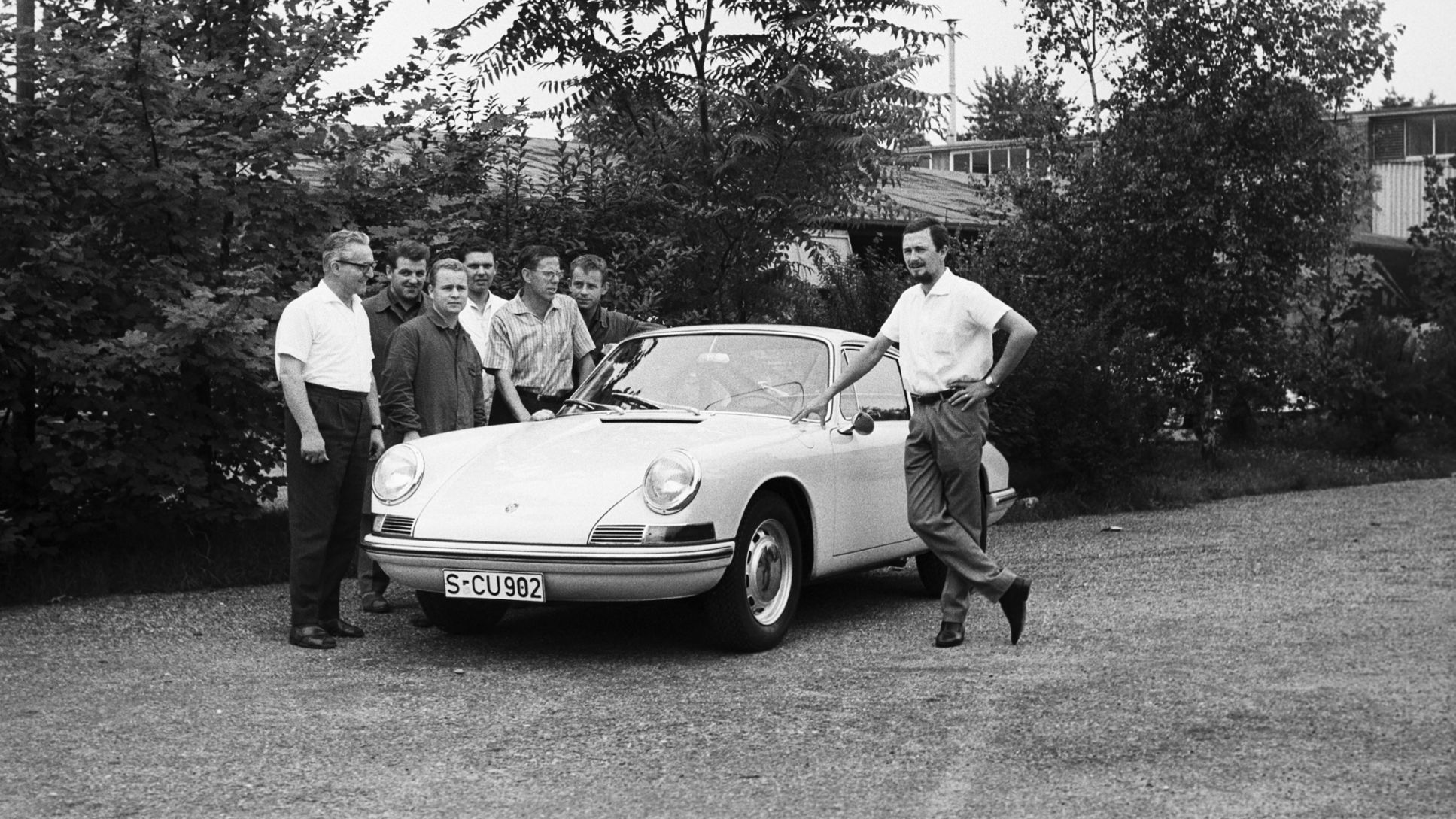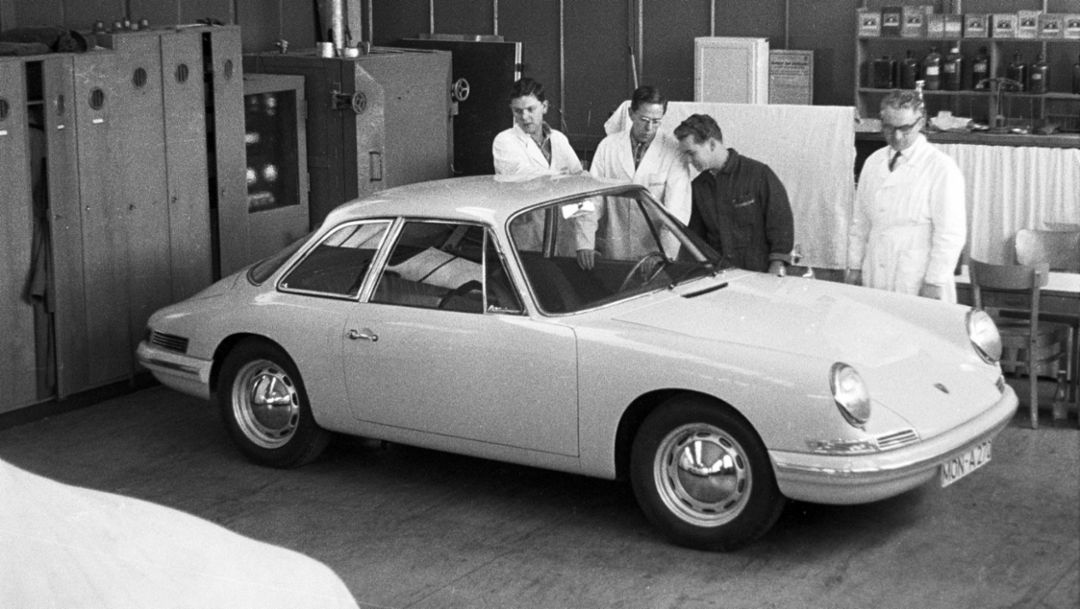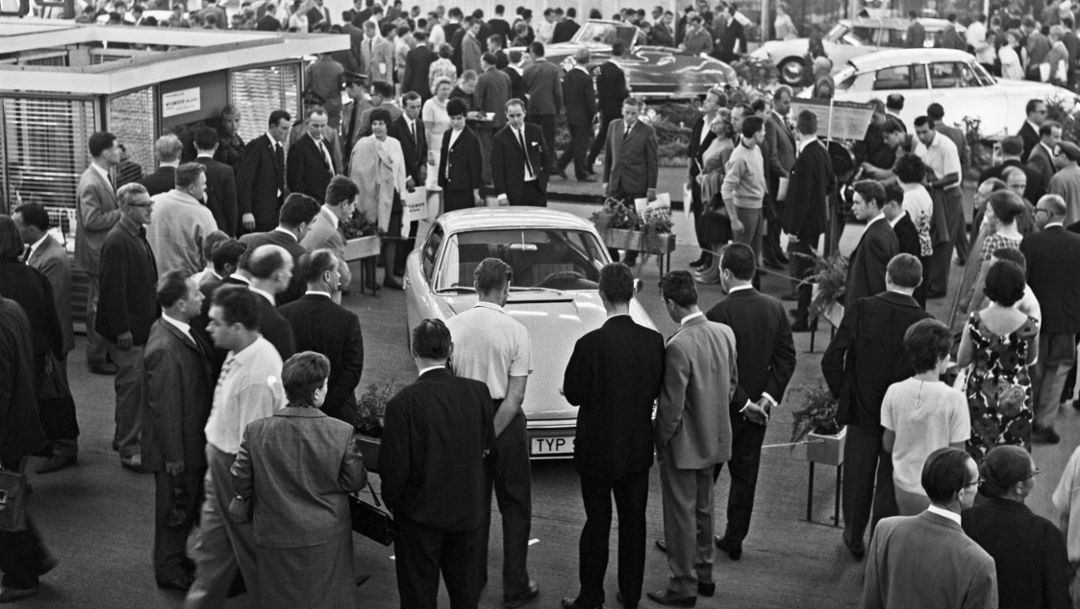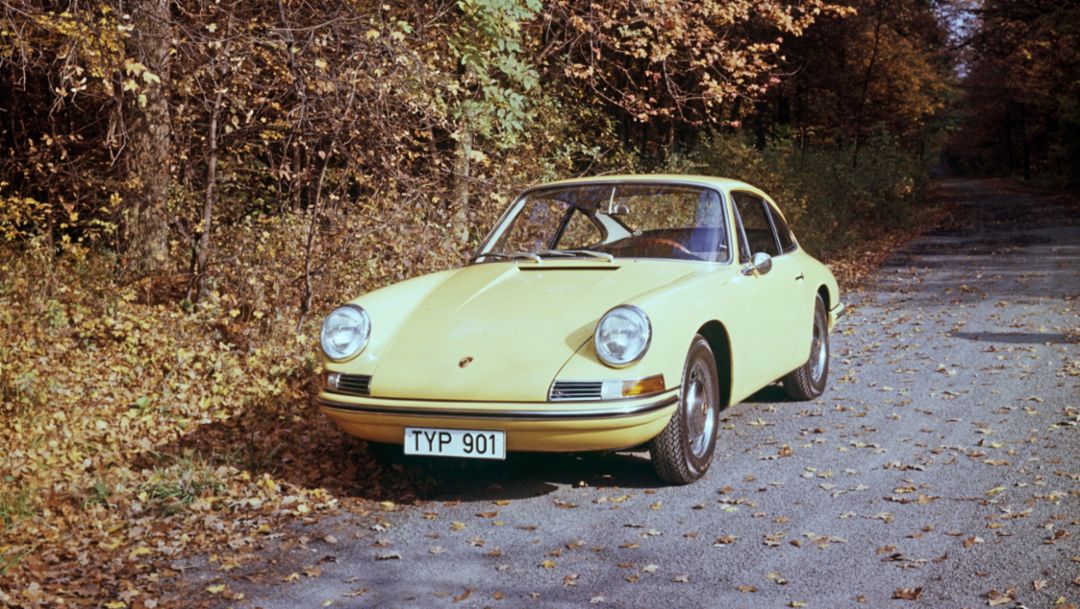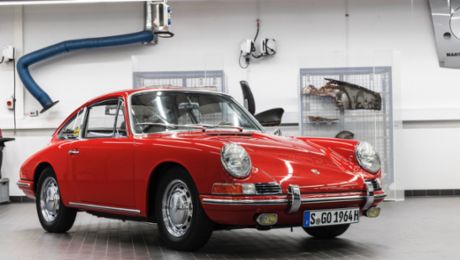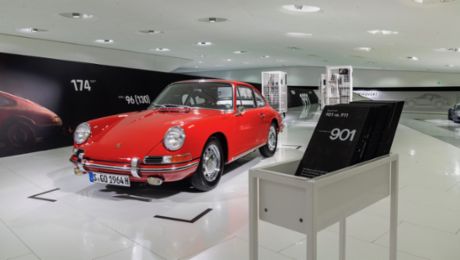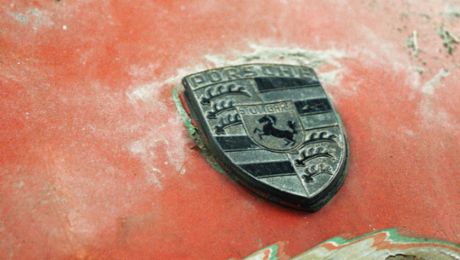A wishlist jotted down by Ferry Porsche on squared paper included the following features: “2-seater with 2 comfortable jump seats. Rear view mirror integrated in the wings. Easier entry”. At the same time, the Sales department demanded the following: “Retain previous Porsche line. Not a fundamentally new car. Sporty character”. The general direction was therefore clear: evolution, not revolution. The same also applied to the technology. The drive principle – including a flat engine at the rear – would remain, but the chassis concept would be modernised.
At first, the focus was on the shape of the future series. Porsche did not have a design department at the time, and deciding on the shape was part of the body development process. Several proposals from the engineers and from well-known designers had been received by Porsche. Even though some of them were very elegantly drawn, none of them found approval from Ferry Porsche: As nice as they were, the head of the company felt they were not a Porsche. A design by a brand-new recruit who had joined the design office of the former Dr. Ing. h.c. F. Porsche KG in 1957 was the crucial deciding factor: In 1959, Ferry Porsche’s son Ferdinand Alexander produced a model of a coupé that for the first time came close to the founder’s ideas. On the basis of his designs, the prototype 754 was created in 1960 as a highly promising four-seater study.
Forerunner of the 911: Type 754 from 1959
The Type 754 featured most of the typical characteristics of the modern-day design icon that is the 911. The flattened bonnet between the free-standing wings. The inclined built-in headlights, the A-pillars with the windscreen, the elegantly shaped rear section. Almost all of the requirements in the specifications had been met in the design by F.A. Porsche, as he was called by his colleagues. With one exception: the fastback style that had been requested. Ferry Porsche insisted on this feature, which meant rejecting the four-seater. As a compromise, the 2.40-metre wheelbase from the previous design was shortened to 2.20 metres.
In 1962, work started on the development of the fastback coupé with a 2x2 seating arrangement. Its type number was 901. On the evening of November 9, 1962, the first prototype rolled out of the Zuffenhausen factory gates for a test drive. Time was short. A ready-to-drive car was needed by autumn 1963 so that the world premiere could be celebrated at the IAA. The engineers were busy working not only on the 901, but also on a whole series of other design commissions. After all, Porsche continued to be a busy design office as well as an automotive manufacturer. A further complication was that Reutter, the supplier of the bodywork, was reluctant to make the investment required for the new model. To ensure that series production was even possible, Porsche had to take the bull by the horns: In summer 1963, the company took over the pressing plant, including the 1,000 or so employees working there.
World premiere of a pre-series vehicle: 901 makes its debut in Frankfurt in 1963
At the IAA on September 12, Porsche celebrated the world premiere of the 901 with a pre-series vehicle, even though its specification was far from being finalised. It was only in May 1964 that development of the vehicle had advanced to a stage that the new model could be presented to industry professionals. The six-cylinder flat engine with eight crankshaft bearings was a completely new development. Dry-sump lubrication ensured an adequate supply of oil, even at high longitudinal and lateral acceleration. One camshaft rotated in each of the cylinder heads, driven by intermediate shafts and a chain. With a compression ratio of 9:1, the engine delivered power of 130 hp at 6,200 revolutions per minute from a displacement of 1991 ccm.
On the exhaust side, Porsche borrowed a tried-and-tested approach from the 356 in the shape of vehicle heating via heat exchangers. The heating pipes were routed into the sill boxes, with vents at the height of the footwell. The rear window and windscreen were supplied with hot air directly by defroster vents. In order to prevent any reduction in comfort compared to water-cooled vehicles manufactured by competitors, additional heating was provided as standard in the front of the 901. A newly developed five-speed transmission was used to transmit power and was also fitted in the 904 Carrera GTS, which debuted at the same time.
From 901 to 911: Pragmatic name change as series production begins
On September 14, 1964, the Porsche 901 went into series production. The first vehicles were kept by the factory or used as exhibition vehicles. One of them was sent to the Paris Motor Show, which opened in the same month. However, the exhibition gave Porsche an unexpected problem: An astounded Porsche management team received an objection from the French car manufacturer Peugeot in early October 1964, indicating that the 901 type designation was an infringement of French copyright and trademark protection. The sales management team suggested that the name of the vehicle type should be changed by replacing the “0” with a “1”. One benefit of this pragmatic solution was that it prevented extensive changes being made to the print layouts that had already been prepared for sales and advertising copy, operating instructions and other documents.
On October 22, 1964, Ferry Porsche gave the order for the name to be changed. From this day on, the 901 was called the 911. And on this very day – October 22, 1964 – a 901 vehicle was taking shape in the production department that would later hit the road under the new 911 title. It was the third and last vehicle built on this day. The red coupé bore the chassis number 300 057. Today, “Number 57” is the pride and joy of the Porsche Museum.
